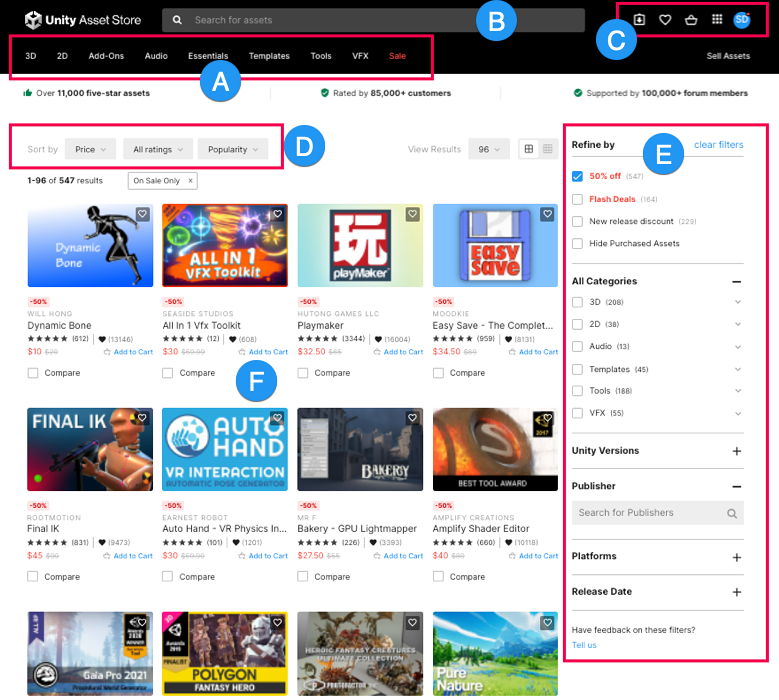Introduction to the Asset Store
The Asset StoreA growing library of free and commercial assets created by Unity and members of the community. Offers a wide variety of assets, from textures, models and animations to whole project examples, tutorials and Editor extensions. More info
See in Glossary contains a library of free and commercial assets that Unity Technologies and members of the community create. A wide variety of assets are available, including textures, models, animations, entire project examples, tutorials, and extensions for the Unity Editor.

Access the Asset Store
You can access the Asset Store website at https://assetstore.unity.com/.
In Unity 6.0 and later, you can open the Asset Store website in the Unity Editor from the Asset Store dropdown in the toolbarA row of buttons and basic controls at the top of the Unity Editor that allows you to interact with the Editor in various ways (e.g. scaling, translation). More info
See in Glossary. You can also use this dropdown to open your downloaded assets in the Package Manager Window.
In all supported versions of Unity, you can search for your purchased and downloaded Asset Store packages in the Package Manager window.
Asset Store package types
Asset Store packages are collections of files and data from Unity projects, or elements of projects. An Asset Store package type is either a UPM packageA Package managed by the Unity Package Manager. Refer to Packages.
See in Glossary or an asset packageA collection of files and data from Unity projects, or elements of projects, which are compressed and stored in one file, similar to Zip files, with the .unitypackage extension. Asset packages are a handy way of sharing and re-using Unity projects and collections of assets. More info
See in Glossary (.unitypackage format). When you add an Asset Store package to your project, the Unity Package Manager unpacks the package and maintains its directory structure and metadata about assets. This metadata includes information such as import settings and links to other assets.
Both package types have their advantages, as follows:
- Asset packages: Best for one-off imports or sharing assets without setting up a package registry and requires fast one-off iterations. It is suited for content assets such as 3D models and UI elements that end players will interact with. For more information about asset packages, refer to Distribute assets as packages.
-
Unity Package Manager (UPM) packages (currently in beta testing): Can be versioned, and excluded from source control. Use UPM when you need version controlA system for managing file changes. You can use Unity in conjunction with most common version control tools, including Perforce, Git, Mercurial and PlasticSCM. More info
See in Glossary, dependency management, or plan to maintain the package across multiple projects. For more information about UPM packages, refer to Introduction to packages.
For more information, refer to Package types, and Introduction to publishing Asset Store packages.